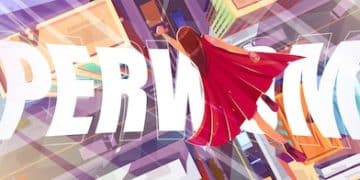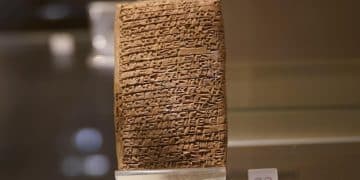How to Identify First Edition Comic Books: A Collector’s Guide

Identifying first edition comic books involves examining cover details, publisher information, key issue numbers, and advertisements to determine its authenticity and value.
How to Identify First Edition Comic Books: A Collector’s Guide is essential for any comic book enthusiast looking to distinguish valuable first editions from later prints. This guide provides the key indicators and expert tips needed to navigate the world of comic collecting with confidence.
Understanding First Edition Comic Books
First edition comic books are highly sought after due to their historical significance and potential value. Recognizing them requires a keen eye and knowledge of specific identifying marks. These marks often differ from era to era and even from publisher to publisher.
Knowing these identifying markers can make a significant difference in your collecting efforts. This helps you ensure that you are acquiring authentic first editions and not reprints or later editions.

Why First Editions Matter
First editions hold a special place in the world of comic collecting because of their rarity and historical importance.
- First printings often have unique characteristics that differentiate them from subsequent editions.
- They represent the initial introduction of iconic characters and storylines.
- Many collectors seek first editions to complete their collections and own a piece of comic book history.
Key Elements to Consider
Several elements come into play when determining whether a comic book is a first edition.
- Cover details, such as logos, issue numbers, and dates, are crucial.
- Publisher information and indicia can provide valuable clues.
- Advertisements and interior content also hold hints for identification.
Identifying first edition comic books requires attention to detail and a solid understanding of the nuances that set them apart. The ability to differentiate these comics is fundamental for any serious collector.
Examining the Cover for Clues
The cover of a comic book is often the first place to look for clues about its edition. Details such as the issue number, date, and publisher logo can offer valuable insights. Variations in these elements can indicate whether a comic is a first edition.
By carefully examining the cover, collectors can start to piece together the history of a comic and determine its potential value.
Issue Number and Date
The issue number and date on the cover are essential indicators of a comic’s edition.
First editions typically have an issue number of #1, but not always, and feature a publication date that aligns with the initial release. Later printings may have different dates or issue numbers.
Publisher Logo and Markings
The publisher’s logo and any unique markings can also signify a first edition.
- Variations in the logo design can help date a comic.
- Specific markings like “Direct Edition” or “Newsstand Edition” can impact its rarity and value.
- Pay close attention to the consistency of the publisher’s branding.
Cover Art and Design
The cover art and overall design of a comic can offer clues about its edition.
- First editions might feature slightly different color schemes.
- They may have unique design elements that were later altered.
- Comparing the cover to known first edition covers can reveal discrepancies.
Carefully reviewing the cover details provides a solid foundation for identifying first edition comic books. These elements often hold telltale signs that set them apart from later printings.
Analyzing the Indicia and Credits
The indicia, typically found inside the comic book, contains vital information about the publication. This includes the publisher’s name, publication frequency, and copyright information. Analyzing the indicia can provide concrete evidence regarding the comic’s print history.
This step is crucial for verifying the authenticity of a first edition and avoiding misidentification.
Location of the Indicia
The indicia is usually located in a discreet spot within the comic book. Check these common locations:
- Inside the front cover, often at the bottom.
- On the first few pages, sometimes near the credits.
- On the last page, in small print.
Key Information to Look For
When examining the indicia, pay attention to these key pieces of information:
- Publisher’s Name: Verify that the publisher matches the expected one for that title and era.
- Publication Date: Note the publication date to ensure it aligns with the first release.
- Copyright Information: Check the copyright year to see if it corresponds with the supposed first edition.
Understanding Printing History
The indicia may also contain the printing history of the comic.
Some publishers explicitly state if the comic is a first printing. Absence of explicit indicators could hint at a later edition.

Analyzing the indicia and credits is a precise method for identifying first edition comic books. The details found within the indicia can confirm or deny a comic’s status as a first edition, adding certainty to your collecting endeavors.
Identifying Key Issue Numbers
Certain issue numbers are significantly more valuable and sought after by collectors. These key issues often mark the first appearance of iconic characters, major plot developments, or milestone events within the comic book universe. Identifying these issues can greatly enhance your collection.
Knowing which issue numbers to look for can significantly increase the chances of finding a highly prized first edition.
First Appearances
The first appearance of a character is a major draw for collectors.
Key issues like Amazing Fantasy #15 (first Spider-Man) or Detective Comics #27 (first Batman) are highly valuable. Knowing these key first appearance issues is beneficial.
Significant Storylines
Issues that feature pivotal storylines or events can also be considered key issues.
- The Death of Superman in Superman #75 is a prime example.
- Other storylines might include major character changes or crossovers.
- These issues hold historical relevance within the comic book world.
Anniversary Issues
Anniversary issues, such as #100, #200, or #500, often garner special attention.
- Publishers frequently release commemorative editions for milestone issues.
- These can include special artwork, bonus content, or variant covers.
- Anniversary issues often become valuable due to their unique attributes.
Identifying key issue numbers is critical for collectors aiming to find the most valuable and historically significant first edition comic books. Keeping track of these milestones can lead to rewarding finds.
Checking for Period-Specific Advertisements
Advertisements within a comic book can serve as time capsules, providing clues about the era in which the comic was published. By examining these ads, collectors can verify whether the comic aligns with the expected timeline for a first edition. Ads that feature contemporary products, events, or trends can be particularly informative.
Understanding and utilizing these advertisements can be a resourceful method for validating the age and edition of a comic book.
Types of Advertisements to Look For
Various types of ads can help date a comic book.
- Toy Advertisements: Ads for toys that were popular during a specific period.
- Food and Beverage Ads: Ads for food and beverages that reflect the trends of the time.
- Movie and TV Show Ads: Promotions for movies and TV shows that were released around the comic’s publication date.
How to Date a Comic Book with Ads
Dating a comic book using ads involves a combination of research and comparison.
Cross-reference ad content with historical data to confirm dates and timelines. Look for expiration dates or promotional periods mentioned in the ads.
Limitations of Using Advertisements
It is important to acknowledge the limitations of using ads for dating.
- Ads might not always be perfectly aligned with the exact publication date.
- Some ads may run for extended periods or reappear in later editions.
- Use advertisements as one piece of evidence among others.
Checking for period-specific advertisements is a strategic approach to identifying first edition comic books. These ads can provide valuable context and confirm the comic’s authenticity, supporting your efforts to find true first editions.
Understanding Direct Editions vs. Newsstand Editions
The distribution method of a comic book can affect its value and how it is identified. Direct editions and newsstand editions represent two distinct channels through which comics were sold. Understanding the differences between these editions is essential for collectors looking to assess the rarity and potential value of their comics.
Identifying whether a comic is a direct edition or a newsstand edition is a key factor in determining its desirability and market value.
Characteristics of Direct Editions
Direct editions were primarily sold through comic book specialty shops.
- They often have a barcode with a solid vertical line instead of a price.
- Direct editions typically have better print quality and were handled more carefully.
- They are often favored by collectors due to their condition and collectibility.
Characteristics of Newsstand Editions
Newsstand editions were sold at newsstands and convenience stores.
- They usually have a barcode with a printed price.
- Newsstand editions tend to be more worn due to handling and distribution.
- They can be rarer in high grades because of their exposure to general public.
Impact on Value and Rarity
The distribution method can significantly impact a comic’s value and rarity.
In many cases, direct editions are more valuable because they were treated with greater care, but newsstand editions are increasingly gaining value because the condition is generally lower.
| Key Aspect | Brief Description |
|---|---|
| 🔎 Cover Examination | Check issue number, date, and publisher logo for discrepancies. |
| 📜 Indicia Analysis | Analyze the publisher’s name, publication date, and copyright information. |
| 🦸 Key Issue Numbers | Identify first appearances, significant storylines, and anniversary issues. |
| 📰 Ad Verification | Look for period-specific advertisements to confirm the comic’s era. |
Frequently Asked Questions
▼
The most reliable indicator often lies in a combination of factors, including the indicia information, cover details, and absence of any markings indicating later printings. Verify these elements collectively for higher accuracy.
▼
Advertisements can serve as time capsules. Ads featuring products or events specific to a certain period can help confirm whether the comic aligns with the purported publication date.
▼
Direct editions were sold in specialty shops and have a solid line in place of a price on the barcode. Newsstand editions were sold at newsstands and have a price printed on the barcode.
▼
First edition comic books are valuable due to their rarity, historical significance, and the fact that they often represent the first appearance of iconic characters or significant storylines.
▼
Reputable comic book collecting guides, online forums, and professional grading services offer valuable information and resources for identifying first edition comics. Always consult multiple sources.
Conclusion
Identifying first edition comic books is a rewarding skill for collectors. By carefully examining cover details, analyzing the indicia, identifying key issue numbers, checking for period-specific advertisements, and understanding the differences between direct and newsstand editions, collectors can confidently navigate the world of comic collecting and acquire valuable first editions.





